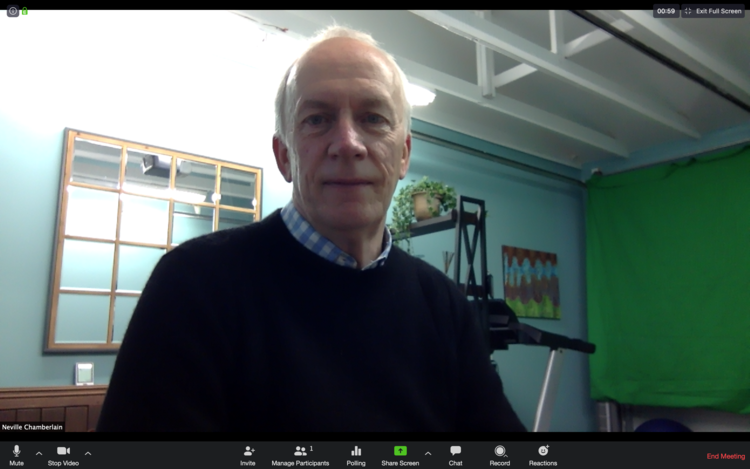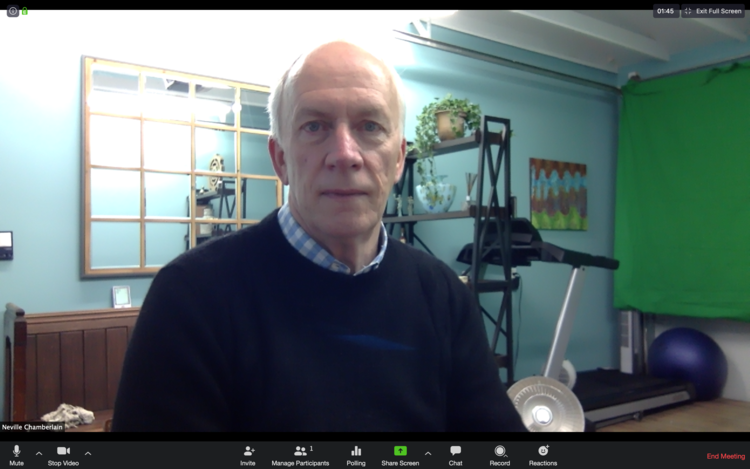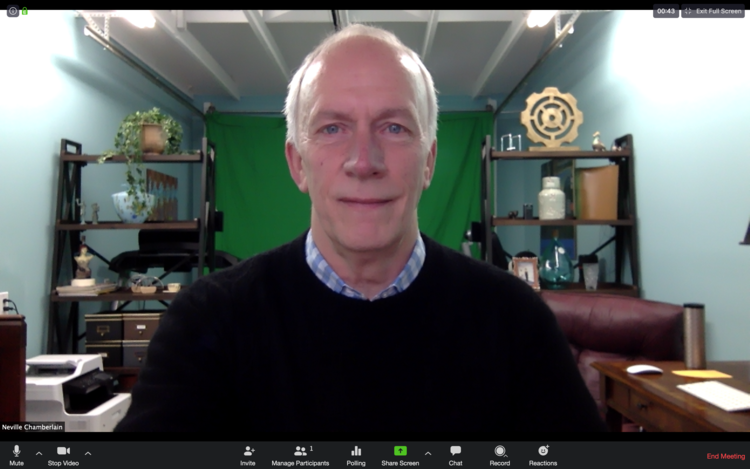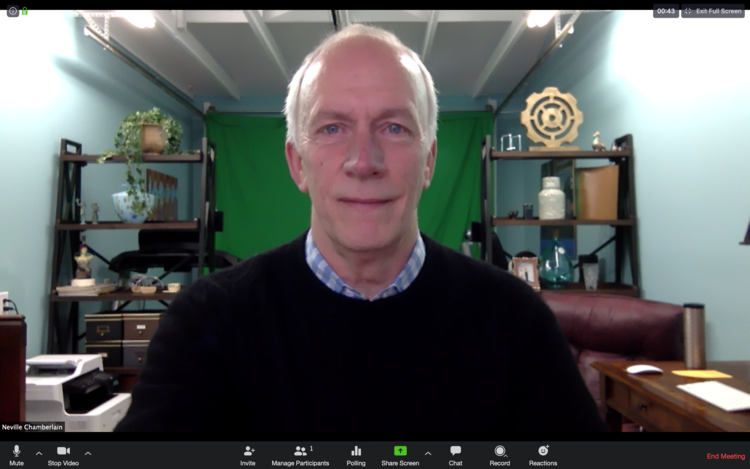Three ways to look better on Zoom (or any video call)
In the time of self-isolation, the use of online video conferencing like Zoom, Skype, GotoMeeting and Microsoft Teams have skyrocketed. By necessity we're conducting our calls online and learning a new way of working.
Everywhere you look there are guides and how-to's for how to keep your calls safe from intruders, keeping your boss from knowing when your attention is wandering (a Zoom-specific feature) and keeping your laundry out of sight.
But as many guides and articles as I've seen around the Internet, I've missed the very basic guidelines that help you look more professional on online calls.
So in this article I'm going to show you three very basic things you can do to look better on Zoom - or any video call for that matter. And oh yes - one bonus guideline at the end.
Guideline 1: Raise your camera to eye level
There's nothing more disconcerting than looking up someone's nose on a video call. Especially when your camera is fairly close to your face, having the camera below your eye level makes your nose look huge - and then having the camera below your eye level as well makes for a very unattractive picture.
Now the goal here is not to look pretty - unless of course that's your thing. At the very least you just want to look professional, and having you look up my nose is not my idea of professional.
Have a look at the two pictures below. The one on the left is a screenshot from my MacBook on my desk. Not only are you looking up my nose (well, sort of), but the lighting behind me is throwing my face in shadow.


In the second picture I've literally just placed my laptop on a box to raise the camera to sort-of eye level. Not only is the perspective improved, raising the computer also helped cut out some of the harsh lighting behind me so my face is better lit.
So when you're on a video call, raise your computer, tablet or webcam so the camera is at eye level. This will give you an immediate improvement in the look of your video call.
And if you still have to use your computer while you're on the video call, get an external keyboard and mouse so you can still use the computer.
If you are using your computer's built-in camera, raising your computer so the camera is at eye level also brings the screen up closer to eye height, a more ergonomic way of working with less stress on your neck.
Guideline 2: Improve your lighting
The second thing you can do to make a huge difference in your video appearance is to improve your lighting.
Even with my computer at eye level, the lighting behind me is harsh and throws my face into shadow. But by simply moving my computer to where I'm facing an outside window, the lighting is hugely improved - as the two pictures below shows.


If you have strong lighting behind you, or from the side, try to move your computer so you have more even light on your face. And if you can't do that, use a desk lamp to fill in the light where the shadows are strongest.
You can even use two desk lamps (if you have space on your desk) to light your face from both sides. Just keep in mind that the closer to your face the lamps are, the harsher the light will appear. So keep the lamp shades on rather than shining light directly onto your face.
Guideline 3: Tidy up the background
My office is in a detached garage that does double duty as a gym. While I have the benefit of an office disconnected from the house, the garage door, rails and gym equipment can be distracting to others on the call.
At the very least, tidy up your background so there are no piles of toys or clothes lying around. If you're fortunate enough to have a dedicated office space, bookshelves or pictures in the background are fine - and a blank wall even better.
At a pinch, you can use Zoom's virtual background to replace your background with any picture. But keep a couple of things in mind:
- Don't fiddle with the background during the call. It's hugely distracting to others.
- The virtual background feature uses software to detect where your face is and replace everything else with a background picture. The more even your background is, the better this replacement will look.
- Try not to move around too much - you will see fringe effects around your face and body as the software tries to keep up with the changes in the background.
In the picture below I'm just using a solid background color as my virtual background. Use Powerpoint or Keynote to fill a slide with a rectangle, fill the rectangle with the color you want and save the slide as a JPG or PNG image to use it in Zoom.


I recently discovered that Microsoft Teams has a very nice "blur background" feature. This works similarly to Zoom's virtual background and creates a very nice background effect.
Bonus guideline: Improve your sound
I'm in the process of converting all my products and courses to an interactive online learning platform. In the process, I've had to learn a lot about recording video (you'll see a green screen hanging behind me in some of the pictures above).
One of the most important lessons I've learnt is that audio is one of the biggest factors that make for a professional-looking video. Even with lower-quality video (if you're not blessed with high-speed Internet), good quality audio helps tremendously to give a professional look.
So here's the deal:
- The built-in microphone in your computer or webcam will do in a pinch - but the sound quality is way inferior to just about everything else.
- If you can, use an external microphone for your video calls. Just about anything will make you sound better - whether it's wired or wireless.
Here's a 15-second audio clip where you can hear the difference between my MacBook's internal microphone, my AirPods and a Blue Yeti USB microphone.
While great audio is not a deal-breaker for online meetings, it can make the experience for yourself - and others - so much better.
Bonus tip: Mute yourself when you're not speaking. This keeps background noises to a minimum.
Summary
You can improve the quality of your online meetings - and look a lot more professional - but applying three simple guidelines:
- Raise your computer or webcam so the camera is at eye level.
- Improve your lighting by facing a window or using a desk lamp to fill in shadows.
- Tidy up your background, or use a virtual background if your software supports it.
And if you can, use an external microphone rather than the built-in one.
For better or for worse, we're likely to see online meetings a lot more even after we've dealt with the CoronaVirus. Make a bit of an effort to look more professional on your video calls now - it will pay off in future as well.






























